
views
Creating an Effective Presentation

Learn and understand the topic. If you are asked to give a presentation on a certain topic, it is likely because you are knowledgeable about the material. If this is not the case, you need to make sure you fully understand the material inside and out before the presentation. The best presenters are those who understand the topic and are clearly passionate about the material they are presenting. For example, if you are asked to present on ethics in business, for a university business class you are likely not an expert on the topic. However, you should still thoroughly research the topic and communicate to your classmates why this is an important topic. Keep in mind why you are presenting on the topic and what should be achieved at the end of the presentation.
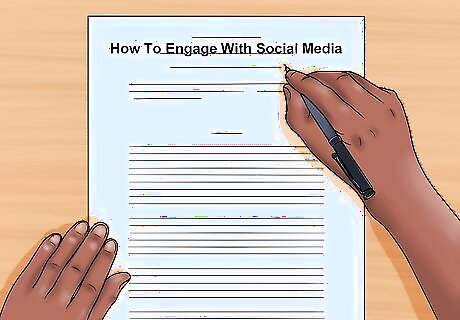
Organize the material in a clear and logical manner. The most engaging presentations are easy for the audience to follow. Make sure that the material you are presenting is arranged in a logical order and flows between topics. This will help you maintain the attention of your audience. The audience should not struggle to follow the presentation because this will detract from the information being communicated. For example, if you are giving a presentation on how to engage with social media, you should begin by outlining different social media platforms. Then explain how each one works, and then provide more detailed information concerning different types of posts, when to post, how to respond to comment etc.

Clearly explain and define key concepts. Some presentations will include complex concepts or key terms that require special attention. It is a good idea to isolate these terms and concepts and clearly explain them to the audience. If you are teaching an undergraduate class in geography, for example, you may want to spend some time defining the difference between human geography and physical geography. Often these definitions will warrant their slide if you are using visual aids.
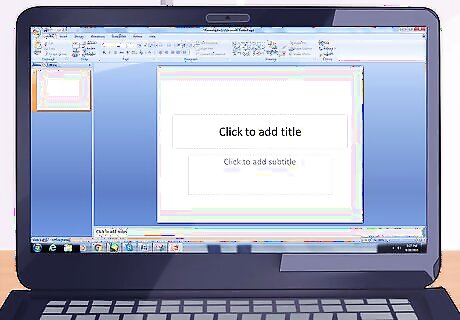
Create interesting visual aids. The most engaging presentations are always accompanied by some form of visual aid, usually a slideshow presentation. Slideshows allow you to provide graphs, charts, images, and text to accompany your oral presentation. Typically, these materials provide a fun way to enhance the learning experience for the audience. For example, if you are presenting financial reports to your coworkers a slideshow will allow you to include graphs and charts that can help the audience visualize the numbers you are explaining. Consider using one of these helpful tools: PowerPoint Keynote Google Slides Zoho Show Prezi
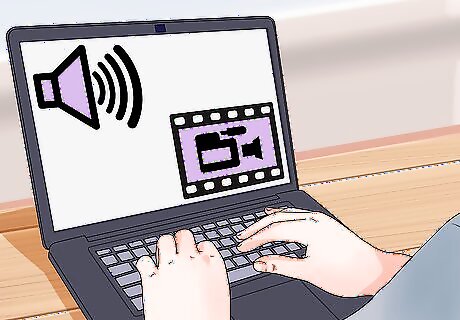
Include audio and video material when possible. Audio and video material can also be included to make a presentation more dynamic and fun. When possible, include a video or audio clip from a relevant movie, television show, music video, or commercial. This will help to break up your presentation so that the audience does not become bored listening to your voice the entire time. Depending on the type of presentation, videos, or music can be played before a presentation begins while people are still taking their seats. If you are giving a lecture in history you may want to provide video footage of the event you are discussing, for example, the Vietnam War or Iron Curtain Speech. You could also use a recent clip from a television show to highlight a specific point you are trying to make in your presentation. Be creative.
Engaging With Your Audience

Ask questions throughout the presentation. Encourage your audience to think actively about the subject you're presenting by asking questions. This will help to engage your audience and make the presentation more fun. Make sure that the questions you ask either promote discussion or critical thinking. For example, asking an audience: "Does anyone have any questions?" is good manners, but is often met with silence. Try asking your audience open-ended questions like "What's the most difficult or frustrating aspect of this new software for you?" Try out these fun ways to encourage audience participation in your next presentation: Ask questions that people can answer by raising their hand. For example, you could ask, “how many people in the audience are bloggers?” This will engage the audience without putting them on the spot to talk, and is a great way to ask questions when you have a large audience. Give out treats when people answer questions correctly. For example, you could hand out a lollipop or chocolate bar each time some answers a question correctly. This may motivate people to engage with the material and participate frequently. Put questions in a bowl at the front of the room and have audience members pick them out at random. This is a creative way to ask questions and helps to involve audience members in the presentation.

Have audience members help with the presentation. Depending on the type of presentation you are giving, you may be able to ask some audience members for help at different points. This will allow you to actively engage audience members and will ensure that your presentation is both fun and memorable. A few ways to allow the audience to actively engage with your presentation include. Having audience members read out information or explain certain points. Asking audience members to help hand out additional material. Allowing audience members to help with a demonstration.
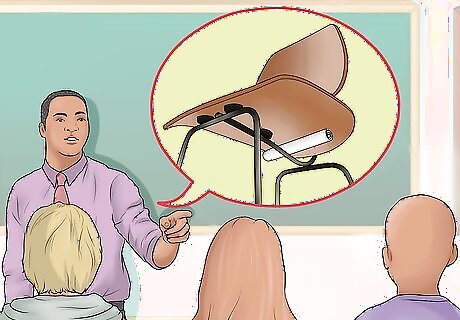
Find creative ways to distribute additional material. If you need to provide the audience with a handout or any additional material, you can come up with creative ways to include the audience. For example, you could hide material under their chairs so that the audience members have to move around to access the material. During a more informal presentation, you could create a scavenger hunt for the audience to find materials hidden throughout the room. Be creative and come up with a fun way to distribute material and make your presentation stand out.

Provide a refreshment break if possible. If you are giving a long presentation, regardless of how fun you are making it, people will get tired and their minds will start to wander. By giving a 10 to 15-minute break, you will allow the audience a chance to go to the washroom, get a coffee, socialize, and stretch their legs. This will help you keep their attention for the remainder of the presentation.
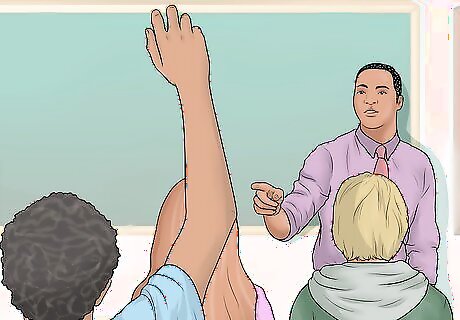
Allow time for the audience to ask questions. Some audience members may want to ask questions during the presentation. Make sure that you set aside time to allow your audience to make comments and ask questions about the material. This will help them engage with the presentation. Here are a few suggestions for incorporating a Q and A section into your talk: Allow audience members to raise their hand and ask questions at any point. Periodically ask the audience if anyone has a question. Typically, this should be done at the end of a specific section or segment of the presentation. Set aside time for questions at the very end of the presentation.
Entertaining Your Audience

Be a dynamic presenter. There is nothing worse than listening to a presenter with a monotone voice. Entertain your audience by showing your enthusiasm for the topic. This will make your presentation more fun to listen to and will help keep the attention of the audience. Use inflection in your voice, be excited, incorporate hand gestures and move around the room. Your enthusiasm for the topic will rub off on audience members. Even if you are presenting on a perceivable boring topic, you can help make it fun by being enthusiastic and dynamic. If you are standing on a stage, there's nothing stopping you from getting off and walking through the audience as you present. Be aware of the volume of your voice. In a large auditorium, you may need to speak louder to be heard in the back.

Provide a humorous observation or anecdote. Presentations are always more fun if you can find a way to insert a little humor, but this is not an easy task. Here are a few things to consider when adding a joke to any presentation: Know your audience: You should know the general age and interests of the audience members to ensure that the joke is not offensive and that they will understand the joke. For example, avoid making references to the television show Frasier if you are presenting to high school students. They will not get the joke. Use safe humor: Avoid using the audience as the butt of the joke or dividing the audience (ie joking about women or blondes), or using offensive language. Instead, you can use gentle self-deprecating humor. You could say "I know you all rushed here to listen to a presentation on making photocopies." This joke allows you to acknowledge in a sarcastic way the dry nature of the topic you are presenting on. Integrate the humor into your presentation: The best way to include jokes in a presentation is to stay on topic. Try to make sure the joke relates to the material being presented. Rehearse the joke: Practice the joke as part of your presentation and test it out on other people before presenting. This allows you to get the timing right and ensure that the joke with get a laugh.

Make eye contact. Making eye contact with your audience is a great way to hold their attention and provide an effective and entertaining presentation. If you are presenting to a small group, you should try to make eye contact with all audience members. For larger audiences, try to make eye contact with each section of the audience. Avoid only making eye contact with the people you know in the audience or with the person, who is assessing the presentation. EXPERT TIP Lynn Kirkham Lynn Kirkham Public Speaking Coach Lynn Kirkham is a Professional Public Speaker and Founder of Yes You Can Speak, a San Francisco Bay Area-based public speaking educational business empowering thousands of professionals to take command of whatever stage they've been given - from job interviews, boardroom talks to TEDx and large conference platforms. Lynn was chosen as the official TEDx Berkeley speaker coach for the last four years and has worked with executives at Google, Facebook, Intuit, Genentech, Intel, VMware, and others. Lynn Kirkham Lynn Kirkham Public Speaking Coach Eye contact is one of the critical elements of any presentation. Making eye contact with your audience shows that you care about them. Look and smile at individual people to make them feel engaged and make your presentation more enjoyable.
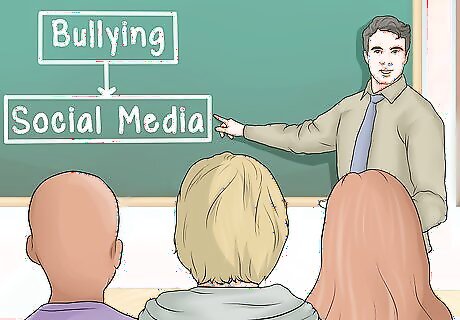
Make a personal connection. If you can find a way to make the topic you are presenting meaningful to your audience, it is more likely to have a lasting impact. For example, try to tell a relevant story or current event and connect it to the topic of the presentation. This will get your audience thinking and will make your topic more relatable. Alternatively, you could try providing a local connection. For example, how does this topic directly impact the people in the audience? For example, if you are presenting to a group of high school students about bullying and social media, you may want to draw their attention to a few examples of young celebrities using social media to attack one another. This could help to make the topic more relatable to the young audience by connecting to a story they are familiar with. EXPERT TIP Lynn Kirkham Lynn Kirkham Public Speaking Coach Lynn Kirkham is a Professional Public Speaker and Founder of Yes You Can Speak, a San Francisco Bay Area-based public speaking educational business empowering thousands of professionals to take command of whatever stage they've been given - from job interviews, boardroom talks to TEDx and large conference platforms. Lynn was chosen as the official TEDx Berkeley speaker coach for the last four years and has worked with executives at Google, Facebook, Intuit, Genentech, Intel, VMware, and others. Lynn Kirkham Lynn Kirkham Public Speaking Coach Our Expert Agrees: Make your presentation more enjoyable by tying your words back to your audience and what matters to them. Instead of reading off ten bullet points, ask why your presentation is important to your audience, and make the information you provide relevant to that.


















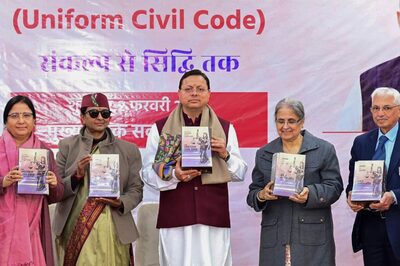

Comments
0 comment